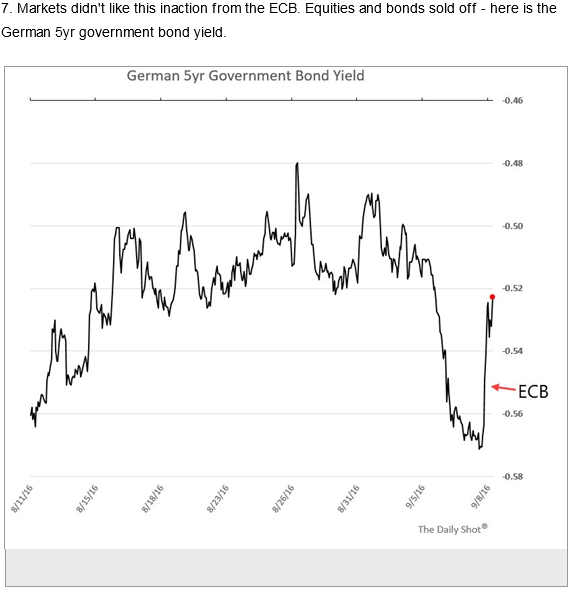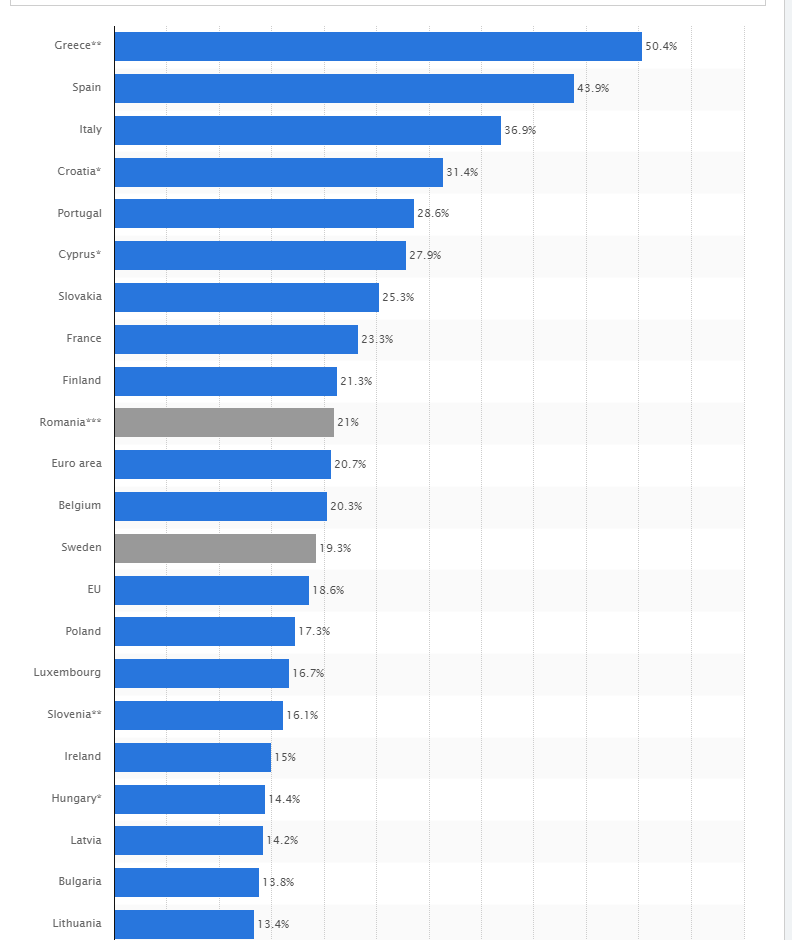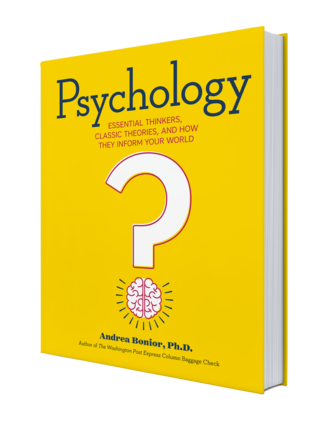1.ECB Does Nothing Causing Some Overnight Bond Volatility.
Global equities are also lower after the European Central Bank held interest rates at record lows and refrained from adding new stimulus. While President Mario Draghi said the ECB was looking at options to continue its money-printing program, investors were looking for more immediate action, including an extension or expansion of the current plan, or at least clearer hints of future actions.

2. August had Zero Volatility.
Since 1950, the trailing one-month standard deviation of the S&P 500 has been higher than August’s levels 98% of the time. The distribution chart below helps to illustrate just how quiet the trading was in August compared to the historical distribution of volatility, which shows that most trailing periods have a volatility between 10% and 20%. Of course, the long tail out to the right highlights periods like 2008 when volatility spiked to extreme levels.
 Tim Hussar at Sage Financial
Tim Hussar at Sage Financial
3. LGIH is my Gen Y Home Buyer Indicator Making New Highs.
Affordable first-time buyer homes.

4. The Regional Bank Box.
2012-2016 Box—Regional Banks Rally and Correct Around Interest Rate Chatter

5. The One Economic Indicator that was in Recession Type Territory is Rolling Back Over.
Inventory to Sales Ratio Got Above 1.35, but it is now rolling over.

6. Youth unemployment rate in Europe (EU member states) as of May 2016 (seasonally adjusted)
The statistic shows the seasonally adjusted youth unemployment rate in Europe (EU member states) as of May 2016. In May 2016, the seasonally adjusted youth unemployment rate in Spain was at 43.9 percent. The source defines youth unemployment as unemployment of those younger than 25 years.

http://www.statista.com/statistics/266228/youth-unemployment-rate-in-eu-countries/
7. 4 Psychology Principles That Help Explain Your Relationships
Old research sheds light on how we interact today.
In doing research for my new book, Psychology: Essential Thinkers, Classic Theories, and How They Inform Your World, I got to revisit all the fascinating and infamous studies from the annals of psychology’s Hall of Fame, from electric shocks to simulated prisons, from doomsday cults to how we remember 9/11. Some of them you may recall if you ever took a psychology class; others were more obscure. What struck me most, however, is just how many of them are relevant—no matter how old they are—to modern day relationships. And the more we understand our behavior, the better we can understand ourselves and choose to act in ways that are most healthy. Here are four classic psychological principles that help explain how you behave with the people around you, even in the age of social media.
1) The gain-loss theory of attraction
Eliot Aronson and Darwyn Linder’s groundbreaking 1969 social psychology research discovered a curious phenomenon: we like someone more if they didn’t seem to like us at first but then came around, compared to if they always seemed to like us from the beginning. This helps explain why we may want to ditch our tried-and-true friends and lovers after winning over someone else we thought we had no chance with—the plot of many a Hollywood movie and teenage melodrama. The gain-loss theory also applies to the workplace. Let’s say you have two bosses. One is kind and always generous with praise, whereas the other never seems to approve of anything that you do. One day, you finally knock a presentation out of the park, and the usually gruff boss compliments you heartily, and is positive and warm with you over the entire week following. Suddenly, you don’t think that formerly gruff boss is so bad after all. You feel validated because you won them over; and you now think of them not as cruel and unfair, but rather as discerning and hard-to-please—and the fact that you passed their test makes you love them even more. Before long, this boss might become your favorite. You leave the boss who’s always been your supporter in the dust, setting yourself up for a drama-ridden roller coaster if Gruff Boss eventually goes back to their usual ways.

Source: Andrea Bonior, Ph.D.
This classic psychological principle established by Leon Festinger in 1957 says that when we have two dissonant—or conflicting—pieces of information, our brains are uncomfortable and will try to reconcile that discrepancy. Often, the two pieces of information that are at odds are our opinions versus our actions, and this plays out in relationships constantly. Let’s say you are dating someone new that you are lukewarm about. The person is nice, funny, and moderately attractive, and any given date is better than staying at home with Netflix. After the person meets your family, however, your family begins openly to disapprove. They say he or she is arrogant and boring, and they can’t see what you see in them. This starts the dissonance, with two conflicting pieces of information: 1) There is evidence that this person may not be a great choice for you to date and 2) You are dating this person. Since you’d still rather date this person than be home alone, you seek to reconcile these pieces of information by changing what you can: the validity of the “evidence.” So you start to convince yourself that your family must bejealous or biased or simply doesn’t know your date well enough. You convince yourself that they are wrong, to help get rid of that evidence—and that dissonance. Before long, your attempts to reject your family’s opinion result in your singing your date’s praises, convincing yourself he or she is actually quite great. Your family’s disapproval—and your discomfort with cognitive dissonance—has made you go from lukewarm about this person to being their biggest fan, and may be sucking you into a sub-par relationship.
3) Approach-avoidance conflict
Kurt Lewin’s 1947 theory said that we could get paralyzed with indecision by the fight between our desire for a certain something versus our discomfort over the drawbacks of it. This, unfortunately, can keep many of us trapped in unhealthy relationships or workplaces. Let’s say you’ve been in a relationship for two years with someone you love but who you know treats you poorly at times, and probably holds you back from some of your greater goals in life. When you spend a day or two on your own thinking about it, you always end up concluding that you need to pull the plug on your relationship. That becomes the goal. But when you wake up the next morning and think of approaching that goal, you are flooded with all the scary things about it: breaking his or her heart, disentangling your finances and belongings, being lonely, and eventually having to start over with dating. These negatives are felt more and more acutely the closer you get to actually breaking up with the person, which makes you want to avoid it. And so it pushes you back into inaction, and the cycle continues again, like a ping-pong ball going back and forth. Lewin even argued that this type of conflict creates a situation that can paralyze you into inaction for indefinite periods of time, because it’s inherently stable and balanced, making you not want to rock the boat.
It is sometime said that couples tend to look more and more similar the longer they are together. Why is this? Do their facial features pick up signals from each other and grow matching cartilage? Does a time machine go back and revise their DNA to make it more similar? Nope. Instead, it likely has a lot to do with Albert Bandura’s 1963 social learning theory, which emphasizes how we learn through observation. Did you and your partner gradually develop similar laughs, after years of hearing each other’s? Have you gradually started to dress in similar styles? Do you now roll your eyes the same way, have the same mannerisms as you quote someone, mispronounce words in the same manner, or bite your nails together when nervous? Social learning can also apply to health behaviors and how we take care of ourselves: our eating habits and activity levels, the care we give to personal hygiene, and whether we smoke, drink, or get a lot of sun. These all then impact our appearance, and when our health behaviors begin to match our partner’s—which happens almost passively over time, just by the subtle forces of living together—then our physical appearances may start to look similar as well. This, of course, can work for better or for worse, as even when we don’t intend to or realize it, we often mimic the behaviors around us that we are consistently exposed to—especially if we admire the person. So if your longtime mate develops a habit that’s bad for them, beware: it’s all too easy for you to pick it up yourself. And it just might show in the mirror someday!
